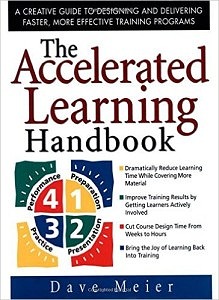You Said It But Did They Get It? 3 Ways To Check For Understanding (reposted)

You just finished a customer service training for a small group of your company’s employees. They listened attentively the whole time your were talking. Now you stop and ask, “Do you understand?” They nod their heads. You continue, “Do you have any questions?” They shake their heads. “Good,” you think. “They’ve got it.”
Or do they? During the next few days, these employees make a number of decisions that cause you to wonder, “Didn’t they HEAR what I told them? If they had only LISTENED, they’d know the right thing to do!” You end up spending precious time helping them correct their mistakes and reviewing the information you already gave them. Meanwhile, your company loses productive time (and perhaps a customer or two) while you re-teach and retrain.
 So how do you make sure learners “get it” the first time you say it? How do you know if they REALLY understand what they hear? Simple. You “check for understanding” either during or after you’ve taught a section of content. Checking for understanding simply means you STOP TALKING and ask the learners to SAY or DO something with the information you just gave them.
So how do you make sure learners “get it” the first time you say it? How do you know if they REALLY understand what they hear? Simple. You “check for understanding” either during or after you’ve taught a section of content. Checking for understanding simply means you STOP TALKING and ask the learners to SAY or DO something with the information you just gave them.
Here are three “check-for-understanding” strategies from The Ten Minute Trainer and “Training from the BACK of the Room!” These strategies will give you a good indication of whether or not learners understand, remember, and can apply what they have heard.
REPEAT-BACK: Working in pairs or triads, learners take turns verbally summarizing the major points that you made in the content-delivery segment you just finished. Or they verbally list the most important facts they just learned and how they might apply this information to their work. Or, if the class is small, they work together as a whole group and take turns adding facts to what the previous person just said. You listen to some of the conversations, then do a final summary in which you correct any misconceptions. The Repeat-Back strategy will give you immediate feedback as to what they do and don’t understand.
 THINK-BACK: Also called “passive reflection,” the Think-Back gives learners time to think about what they have heard. According to David Meier, the author of The Accelerated Learning Handbook, learners need “to reflect on experience and to create connections, meanings, and values” out of new information.
THINK-BACK: Also called “passive reflection,” the Think-Back gives learners time to think about what they have heard. According to David Meier, the author of The Accelerated Learning Handbook, learners need “to reflect on experience and to create connections, meanings, and values” out of new information.
Ask learners to think about new information and how it fits with what they already know. Or ask them to share a comment or a question about what they heard you say. Or they take turns telling you one way they might be able to use the new information when back at work. Again, you will get a clearer picture of what they understand and what they might still be confused about.
A Teach-Back is basically an extended Repeat-Back. Learners pair up pretend that one person is the “teacher” and one is the “student.” The student asks questions about the new information (as if he doesn’t know the answers) and the teacher explains the answers. Then they switch roles and repeat the procedure, asking different questions. You listen to their conversations and affirm what they say or correct any misunderstandings. Learners can also give each other corrective feedback.
For three more ways to check for understanding, click on the red button below:
For the article that was the source of this blog post, click HERE.
For the public calendars of both virtual and in-person TBR classes, click on the red button below.